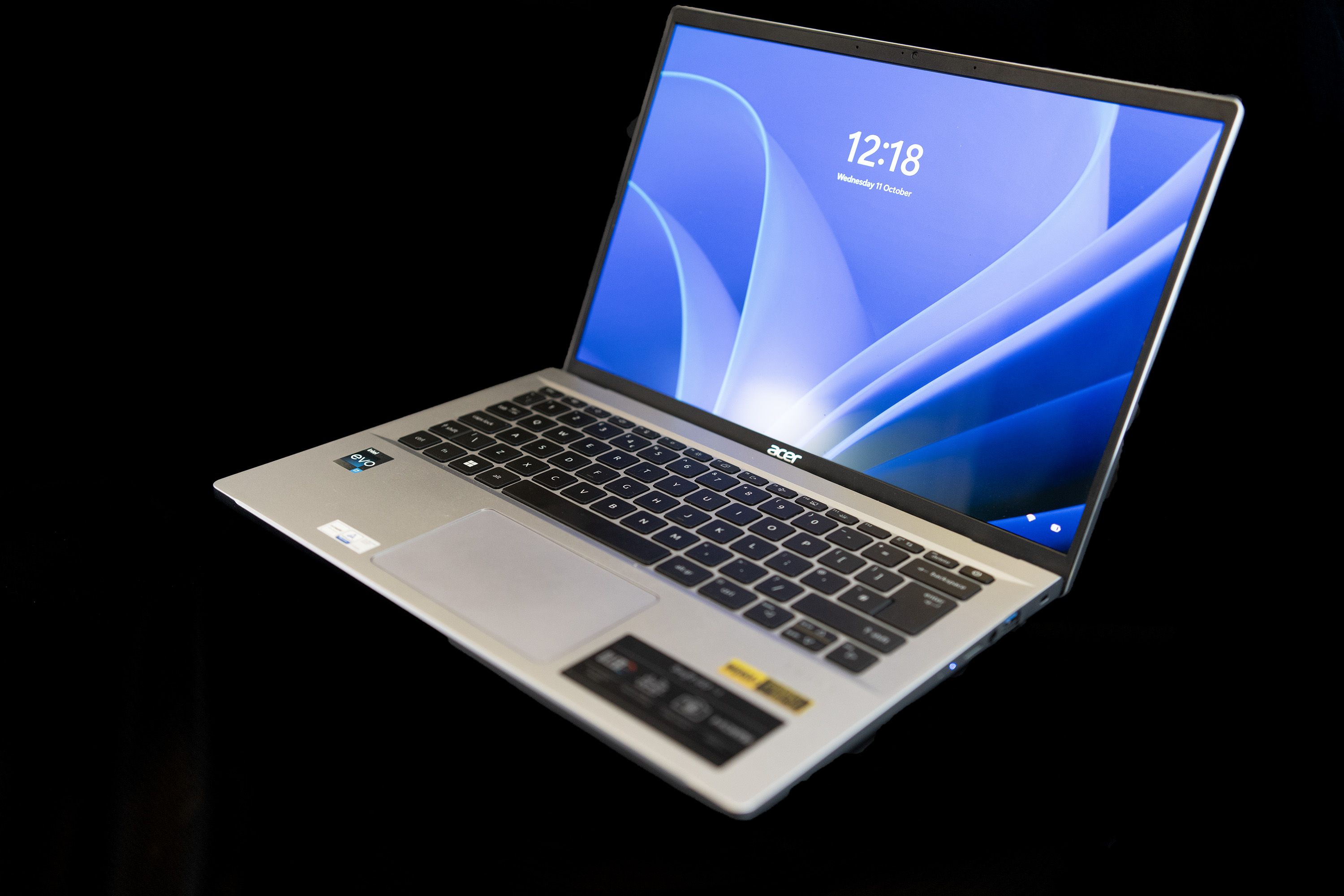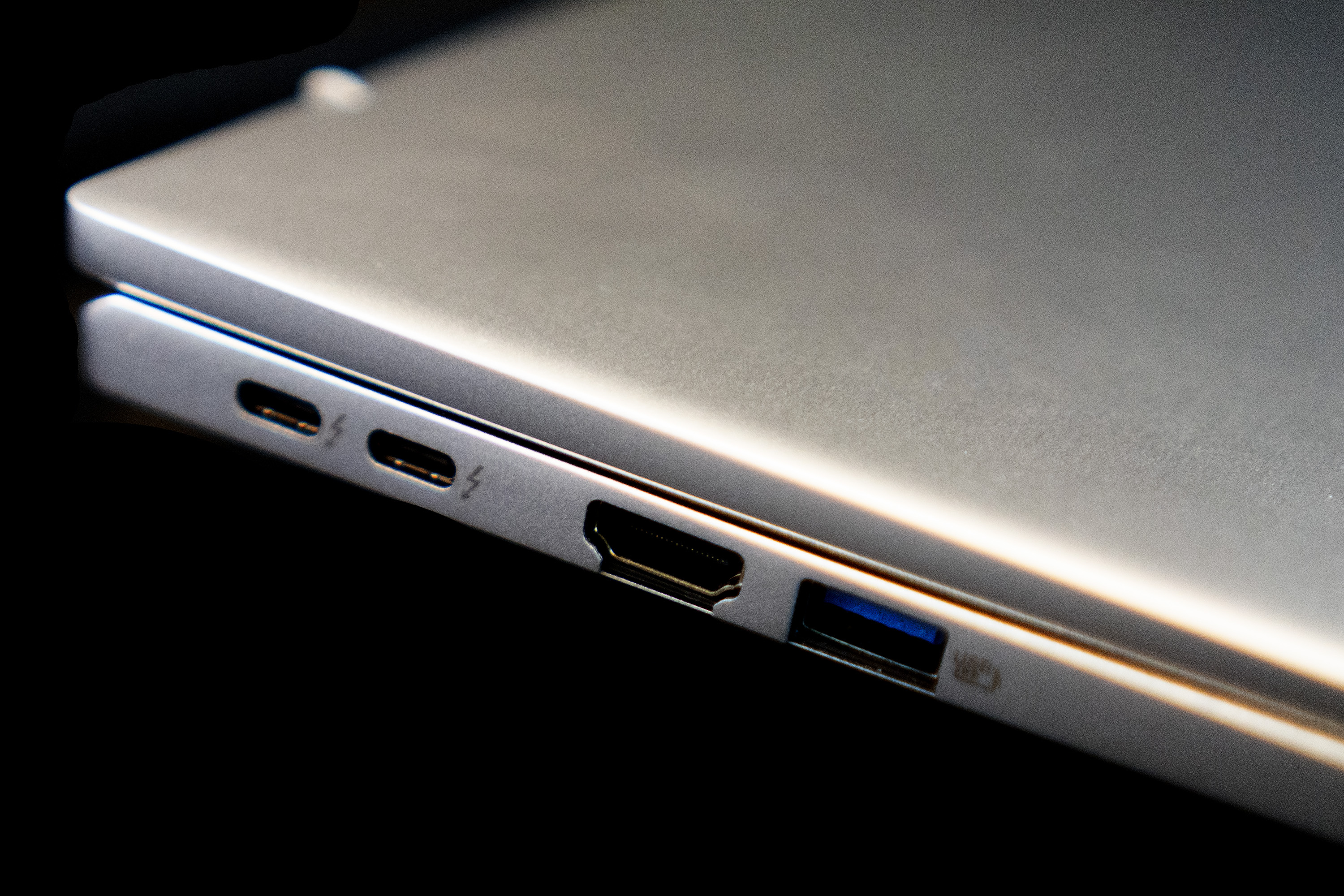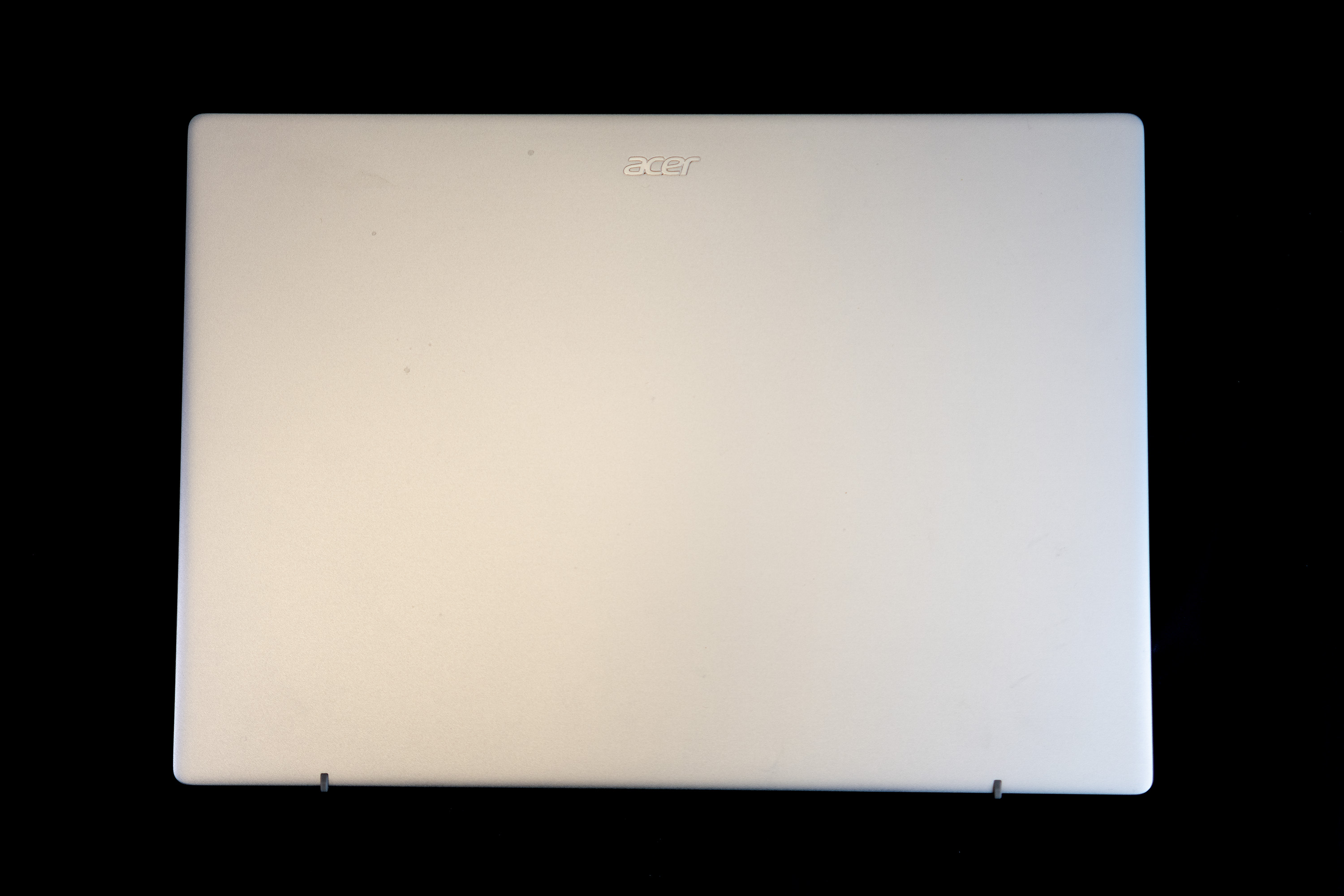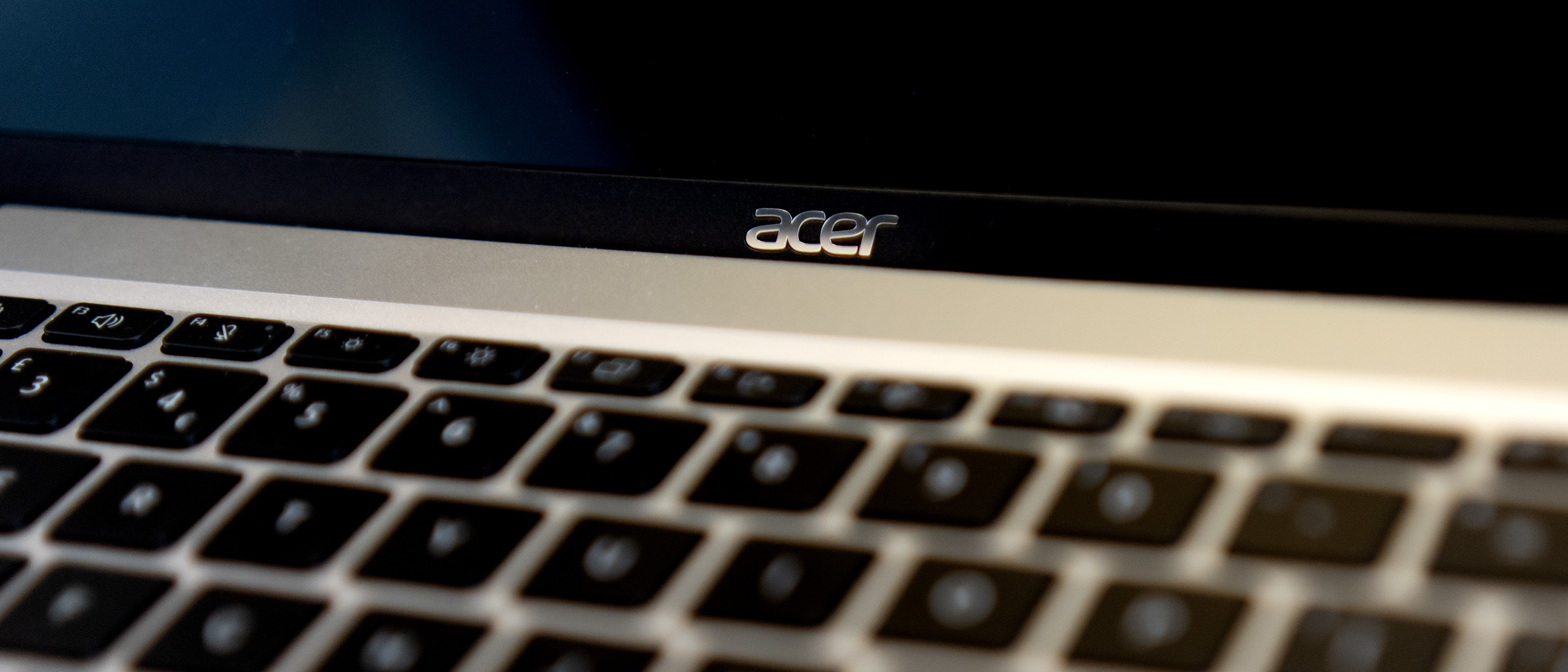Our Verdict
This lightweight laptop brings a good level of spec and a bright OLED screen while managing to keep its price at a reasonable level. It's an attractive machine in a compact package and should do well for most image editing and design tasks, though the lack of a dedicated graphics chip will force some to look elsewhere.
For
- Powerful enough spec
- Reasonable price
- Lightweight
Against
- Integrated graphics only
- Keyboard could feel better
- No Ethernet port
Why you can trust Creative Bloq
The 14-inch laptop is a relatively recent invention that makes the most of modern display technology to fit more screen and less bezel in the same sort of space you’d once have expected from a 13-inch model. It doesn’t exactly bridge the gap between 13-inch and 15-inch laptops, but instead pushes the 13-inchers down to notebook or budget level.
At just 1.25kg the Acer Swift Go is an extremely portable laptop with a dazzling OLED 16:10 display that makes the best of the 14-inch form factor and carries a very decent array of ports. It is, however, a little bit thick when closed, a drawback that may only become relevant if you’re very pushed for space when travelling.

Acer Swift Go 14 review: Key specs
| CPU: | Intel Core i7-13700H |
| RAM: | 16GB LPDDR5 |
| GPU: | Intel Iris Xe |
| Storage: | 1TB SSD |
| Screen: | 14in 2880x1800 16:10 OLED, 90Hz non-touch |
| Connectivity: | Wi-Fi 6, Bluetooth 5.1, 2x USB 3.2 Gen 1 Type-A, 2x Thunderbolt 4, HDMI 2.1, Micro SD, headset jack |
| Battery: | 65Wh |
| Dimensions: | 15 x 313 x 218mm |
| Weight: | 1.25kg |
Acer Swift Go 14 review: Design and build

Acer laptops have a definite look about them. In fact, you might call it a family resemblance. The silver plastic wedge is a common theme across low-end Chromebooks and the Swifts, Spins and Aspire models that make up the bulk of its range. Only the toughened Enduro and Predator gaming laptops escape.
The reason for this design's longevity is that it works – there are only so many ways you can push the shape of a laptop before it stops functioning as a portable computer, and users want things like keyboards and trackpads to be in the places they expect them to be. And that’s what you get on the Swift Go 14: a place for everything and everything in its place. It’s a neat and compact laptop that manages to squeeze a lot into a small space.
The lightness of the laptop can lead to suspicions it’s made of cobwebs and taffeta, but while there is some flex to be found if you worry at its corner, the frame underneath is stiff and the screen hinge feels strong.
Acer Swift Go 14 review: Features

One of the standout features of the Go 14 is the amount of I/O you get. While there's no Ethernet, you do get four whole USB ports – two of them Thunderbolt 4/USB 4 Type-Cs. There's a full-size USB 2.1 on the left-hand side to connect an external display, so you won’t be cluttering one of the Type-C ports up with a video adapter (though you might use one for charging), which leaves a heck of a lot of bandwidth available for connecting peripherals.
There's enough here that you could easily get away with not needing a Thunderbolt dock to replicate missing ports, as Wi-Fi 6 offers fast and stable network connections that can make an Ethernet socket obsolete unless you need something faster than the gigabit range.
Daily design news, reviews, how-tos and more, as picked by the editors.
One thing you’re likely to want to plug in is a wireless keyboard and mouse dongle. The 14-inch form factor doesn’t leave a lot of space for the tenkeyless keyboard and its companion trackpad, and they’re one of the weakest parts of the Go 14. There's only a small amount of travel under the keys, and while we appreciate the almost full-size Return key (the apparently now-essential dedicated # key touches and cuts into it in a curious blend of the old and new) the half-height up and down arrow keys are tricky to use. The trackpad is nicely smooth but a bit small, and it’s possible to run out of space when performing the two-fingered stroking gesture that scrolls pages.
The webcam gets a positive mention, for once, as this often overlooked but essential part of the machine now shoots video at 1440p and produces a sharp picture for video calls that’s enhanced by the usual software tricks. It’s a shame, though, that it doesn’t support Windows Hello facial recognition, though there is a fingerprint sensor built into the power button.
The HDR OLED screen is an excellent implementation of the tech, hitting 100% of the P3 colour gamut and with a sharp and bright 5MP (2880x1800) 16:10 panel that’s perfect for placing two documents or web pages side by side without feeling cramped in the way a 16:9 screen can.
Acer Swift Go 14 review: Performance

| Cinebench R23: | Multi-core: 10,069 | Single-core: 1,533 |
| PCMark 10: | Total: 10,767 | Battery test: 8h 23m |
| Geekbench 6 CPU: | Multi-core: 8,681 | Single-core: 2,157 |
| Geekbench 6 GPU: | 16,457 | Row 3 - Cell 2 |
| Handbrake: | 7m 10s | Row 4 - Cell 2 |
Intel’s Evo platform announces itself via a sticker on the Swift Go 14. This newish innovation from the chipmaker means you can be sure of getting a laptop with a good processor, set minimum levels of RAM and storage, battery life of nine hours (with a 1080p screen) and fast charging, plus Thunderbolt 4 and other things that are nice to have.
The Swift Go hits the target, its 14-core (6P, 8E) 13th-gen i7 processor bringing a nice balance between usefulness and endurance, and 16GB of RAM is plenty for most tasks, though more is always better. There's no separate graphics processor, but the Iris Xe GPU built into the i7 offers enough oomph to drive the screen and an external monitor, as well as providing a degree of acceleration for graphics apps (the new neural-network noise reduction in Adobe Camera Raw is particularly hard on this) and even allowing for a little light gaming at 1080p.
The battery life of around eight-and-a-half hours of constant use with the screen on comes in under the nine hours in the Evo spec, but that refers to a device with a 1080p screen. OLED displays are notoriously power-hungry, so pushing more pixels takes more juice. As it is, there's enough endurance here to get through the day as long as you’re not pushing it hard all the time. There's a dual-fan cooling solution in the case, which is definitely audible when working but doesn’t announce itself too inelegantly.
The Swift Go 14 posts benchmark results that put it behind another 14-inch OLED laptop, the ASUS Zenbook 14 OLED, which features an i9 processor and an Nvidia GPU, but that machine costs twice as much. It’s also slightly behind the 13-inch MacBook Air M2, but with the Acer, you’re getting 83% (we did the maths) of the performance for around half the price of Apple’s ultraportable.
Acer Swift Go 14 review: Price

The Acer Swift Go 14 OLED, as tested, comes in at £999 in the UK and $1,099 in the US, but the entry-spec is available for around $/£799. With the OLED screen and the i7 processor the highlights here, we recommend going in for the higher-spec option if you're looking at this model.
Should I buy the Acer Swift Go 14?
As a thin and light laptop, the Acer Swift Go 14 keeps some very competitive company. There are certainly thinner options out there, if being able to carry a laptop in a manilla envelope is important to you, but the Swift is extremely light, and offers a good amount of power. There's very little, beyond heavy 3D work, that you won’t be able to achieve with a laptop that hits this level of spec, and with all the ports it features you’ll be able to plug all manner of screens, cameras and other peripherals directly into the chassis without needing a dock. The Swift Go 14 may not be a beautiful laptop, but it’s an effective one, and you have to respect that.
out of 10
This lightweight laptop brings a good level of spec and a bright OLED screen while managing to keep its price at a reasonable level. It's an attractive machine in a compact package and should do well for most image editing and design tasks, though the lack of a dedicated graphics chip will force some to look elsewhere.

Ian Evenden has been a journalist for over 20 years, starting in the days of QuarkXpress 4 and Photoshop 5. He now mainly works in Creative Cloud and Google Docs, but can always find a use for a powerful laptop or two. When not sweating over page layout or photo editing, you can find him peering at the stars or growing vegetables.

